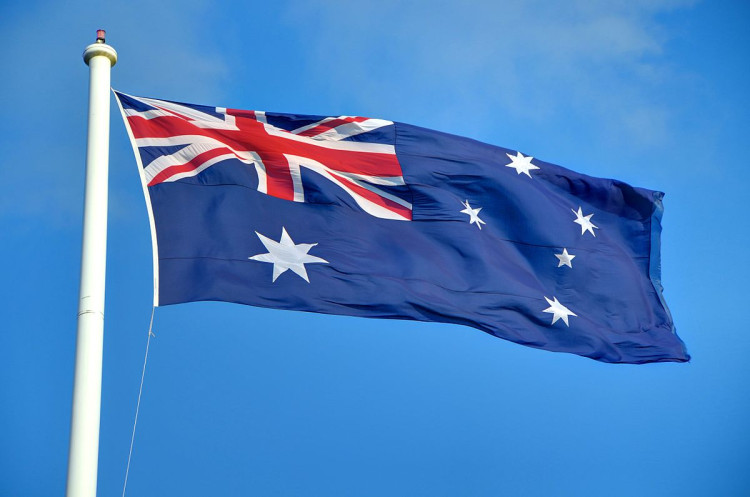An International Atomic Energy Agency (IAEA) team of experts said Australia is committed to strengthening its regulatory framework for nuclear and radiation safety. The team also noted areas for further enhancements, including implementation of the framework in a more consistent manner across the country.
The Integrated Regulatory Review Service (IRRS) team on 16 November concluded a 12-day mission to Australia. The mission was conducted at the request of the Government of Australia and hosted by the Australian Radiation Protection and Nuclear Safety Agency (ARPANSA), the Commonwealth Government regulator. Under Australia’s federal system of government, ARPANSA regulates Commonwealth entities and other entities are regulated within the six states and two territories. The majority of licenced activities in Australia are carried out within states and territories. This was the third IRRS mission to Australia since 2007 and the first to include all nine jurisdictions.
Using IAEA safety standards and international good practices, IRRS Missions are designed to strengthen the effectiveness of the national nuclear regulatory infrastructure, while recognizing the responsibility of each country to ensure nuclear safety.
The IRRS team commended the hosts for inviting a comprehensive review involving all jurisdictions in Australia, adding that it was the first such IRRS mission. The team identified this as a good practice and a model that other federal countries may want to consider when planning for future IRRS missions. Regarding the national framework, the team noted ongoing activities to address consistency in the country’s radiation safety programmes, but said further efforts were warranted in several areas.
“Australia has demonstrated a strong commitment to continuous improvement in nuclear and radiation safety and in regulatory oversight of such facilities and activities,” said team leader Petteri Tiippana, Director General of the Radiation and Nuclear Safety Authority in Finland (STUK). “We are confident that Australia will take further steps, assuring a consistent level of safety and protection of people and the environment across the country.”
Australia uses radiation sources in medical and industrial applications, as well as in science and research, including a research reactor at Lucas Heights, a suburb of Sydney. The country has storage facilities for low and intermediate level radioactive waste, and plans to establish a national radioactive waste management facility.
ARPANSA Chief Executive Officer, Dr Carl-Magnus Larsson, expressed his commitment in keeping the momentum of the IRRS going. “The IRRS has enabled us to have a frank and open exchange and discuss the strengths of the system as well as the barriers in implementing uniform radiation protection regulation. I am looking forward to working with our state and territory counterparts to bring the IRRS recommendations into fruition.”
The IRRS mission interacted with all nine radiation safety regulators: ARPANSA for the Commonwealth of Australia, Queensland Health, the New South Wales Environment Protection Authority, Victoria’s Department of Health and Human Services, South Australia’s Environment Protection Authority, Tasmania’s Department of Health, Western Australia’s Radiological Council, the Northern Territory’s Department of Health, and the Australian Capital Territory’s Health Protection Service.
The IRRS review covered areas including: responsibilities and functions of the Government and of the regulatory body; the global safety regime; activities of the regulatory body including authorization, review and assessment, inspection and enforcement processes; development and content of regulations and guides; emergency preparedness and response; occupational radiation protection; patient protection; discharges and material clearance; transport; waste management; decommissioning and interface of safety with nuclear security.
The 20-member IRRS team comprised senior nuclear and radiation safety experts and observers from Austria, Brazil, Canada, Finland, France, Germany, India, Ireland, Korea, Norway, Singapore, South Africa, Sweden, the United States of America, and three IAEA staff members.
The team observed regulatory activities such as an inspection of the Australian Nuclear Science and Technology Organisation (ANSTO) at Lucas Heights, New South Wales, an inspection of the industrial radiography facility SafeRad South East Asia in Williamstown, Victoria, and an inspection of the St. Vincent’s Hospital in Melbourne, Victoria.
“The IRRS is an internationally recognized process that strengthens regulatory effectiveness. Countries that invite missions – including Australia - demonstrate openness and transparency,” said Juan Carlos Lentijo, Deputy Director General of the IAEA and head of the Department of Nuclear Safety and Security. “By disseminating and sharing good practices and lessons learned, IRRS missions contribute to a stronger global nuclear safety regime.”
The team identified good practices, including:
- ARPANSA, together with state and territory regulatory bodies, has established comprehensive guidance that addresses existing exposure situations.
- ARPANSA integrates all types of risks in the management processes, the regulatory activities, and day-to-day work activities in a holistic and comprehensive way.
The team provided recommendations and suggestions for further enhancements, including:
- All relevant authorities should consider formalizing the existing elements of the framework for safety into a comprehensive national policy and strategy for safety.
- The Commonwealth Government should make a firm commitment and take actions with specific milestones to address decommissioning of facilities and radioactive waste management.
- The Governments of all jurisdictions should ensure that all parties responsible for the safety of facilities and regulatory activities have the necessary capabilities and human resources to carry out their responsibilities.
- ARPANSA should establish criteria to evaluate the effectiveness of licensees’ emergency exercises and assign roles and responsibilities for its staff during emergency situations.
The final mission report will be provided to the Government of Australia in about three months. The Government of Australia plans to make the report public.


